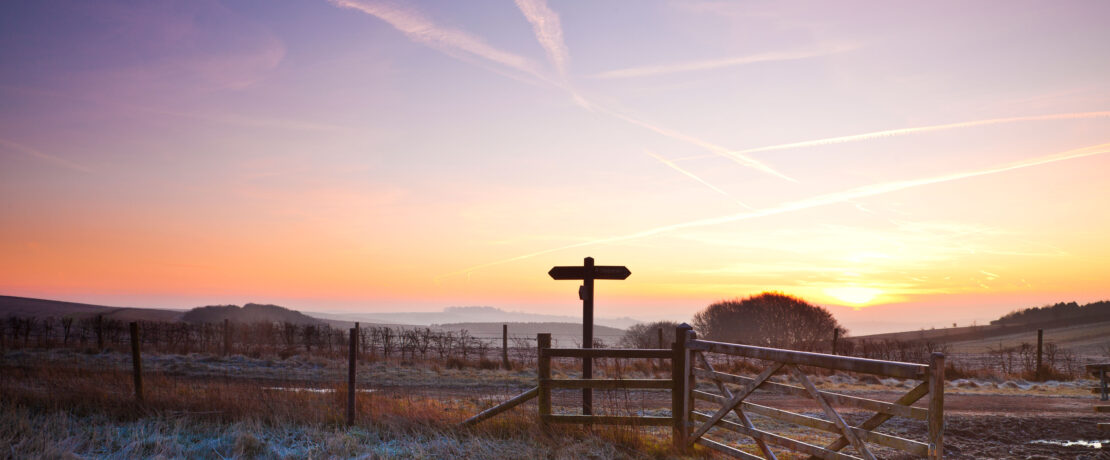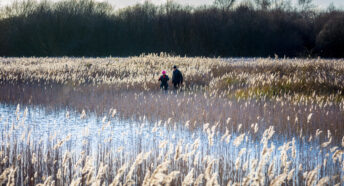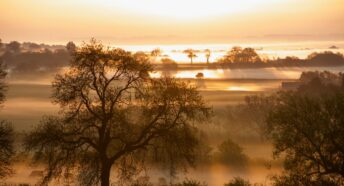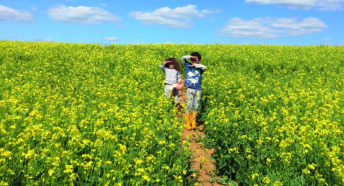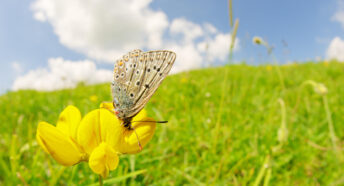Mary-Ann Ochota: ‘Time spent in green space is a wonder drug’
Broadcaster, anthropologist and author Mary-Ann Ochota shares some of her adventures in the countryside – and why she’s passionate about improving access to it
As a child, I’d get cabin fever cooped up inside, and would prefer to be in the garden, in the rain. I grew up in Cheshire – not the picture-postcard bit but the suburban light-industry-on-the-edge-of-a-town bit. We didn’t have lots of money, but I joined the Air Cadets and that opened many adventurous doors for me. We went orienteering, camping, gliding and hiking. Getting muddy and sweaty was expected, and I was in my element.
I rediscovered my love of the outdoors in my twenties. I was living in London and wanted a low-cost adventure, so I decided to try wild camping on Dartmoor, on my own. I didn’t know what to expect – I was worried I’d get lost and drown in a bog. I came back feeling unstoppable. That experience, of discovering what I was capable of, and what time in nature gave me, is part of the reason I’m so passionate about improving inclusion and access for all to the countryside.
Time spent in good-quality green and blue space is a wonder drug, for protecting people’s health and wellbeing, improving community cohesion, educational attainment, social attitudes and shoring up our resilience to all sorts of stresses. It’s been estimated that good access to green space would save the UK £2.1bn in health spending every year. But not everyone feels welcome or safe in the countryside. The facilities and information you need might not be available, or without a car it can be hard to reach places.
I remember going walking on public footpaths in Bedfordshire when I was pregnant. I got to a kissing gate that was so narrow I couldn’t get through it with my bump. Trying to find an alternative route, I got to the next field boundary, and there was a rickety stile I was scared to climb, because I didn’t want to risk falling. I walked back to the car, disappointed and frustrated. It helped me realise how much I usually take easy access for granted.
Impossible paths are a reality for so many people. If you can’t risk a fall, have limited mobility, need a bit more space to get through, or need access for your wheelchair, then a lot of our countryside rights of way are basically blocked to you. Many people give up visiting the countryside because of it. That’s wrong.
We take our network of public rights of way for granted. We assume they’ll always be there, and expect them to be properly maintained. But the local authorities who manage them are hugely under-resourced. Funding paths needs to go hand in hand with spending more on effective education for visitors; better infrastructure in the right places, like litter bins, toilets and car parks; and education for land owners and managers, so they know what good public access looks like, and why it’s a good thing.
Hosting the Finding Our Way podcast for the British Mountaineering Council, I interviewed walkers and climbers from diverse backgrounds. My guests talked about all sorts – from managing chronic illness when climbing to how to convince urban teenagers to go hiking. You learn so much about others’ experiences, and realise that, too often, there are voices missing from conversations about the countryside. Our countryside and conservation organisations need to be as diverse as our society is, across all aspects of identity.
This year The Ridgeway celebrates its 50th year as a designated National Trail, and I’m proud to be an ambassador for its anniversary. Running roughly east-west from Ivinghoe Beacon in Buckinghamshire to Avebury in Wiltshire, the 87-mile route travels through the Chilterns and North Wessex Downs, wide landscapes of rolling chalk downland, ancient woodlands and prehistoric monuments such as the iconic Uffington White Horse and Avebury itself. The Ridgeway route is ancient; parts of it probably predate Stonehenge. And even though you’re in a very populated corner of England, it feels pleasantly remote.
I also loved walking St Cuthbert’s Way with my mum and my then nine-month-old son. The trail meanders back and forth across the England-Scotland border, from Melrose to Lindisfarne. I’m not religious, but it really felt like a pilgrimage; three generations of family travelling, sharing, moving gently through the countryside. The final day, we walked across the sand at low tide, our toes slurping into the mud. My son was asleep on my back, and my mum and I walked in quiet companionship, just taking it all in. It was truly magical.
We don’t often think of England’s green and pleasant land as a place of human sacrifice, sun worship, cannibalism, mummification, magical talismans and curses. But it really is – and the evidence is often preserved in the countryside around us. Some of my favourite sites in England are Knowlton Circles in Dorset, where a ruined medieval church sits slap bang in the middle of a prehistoric earthwork, and the Gosforth Cross in Cumbria, an elaborately carved freestanding church cross where Jesus’s attendants look like Valkyries, Odin and Loki. Did these Christian Vikings also still worship the old gods? The answers aren’t always easy to come by, but the questions are fascinating!
It’s easy to forget that the English countryside is man-made. You can look at some parts and see more than 6,000 years of human endeavour written into the land. We’re custodians of that history, and active in creating its future. It’s not always about resisting change. Sometimes it’s calling out the status quo and demanding swift, transformative action. We’re reaching a critical point for nature and biodiversity, food production, land ownership and land use. Time is short and the revolution is coming.
About the author
Mary-Ann Ochota is an expert in British archaeology and a passionate hillwalker who campaigns for better outdoor access for all. Her presenting credits include Time Team, Mystic Britain and Secrets of Stonehenge, while her books include Secret Britain: Unearthing Our Mysterious Past (Frances Lincoln).
